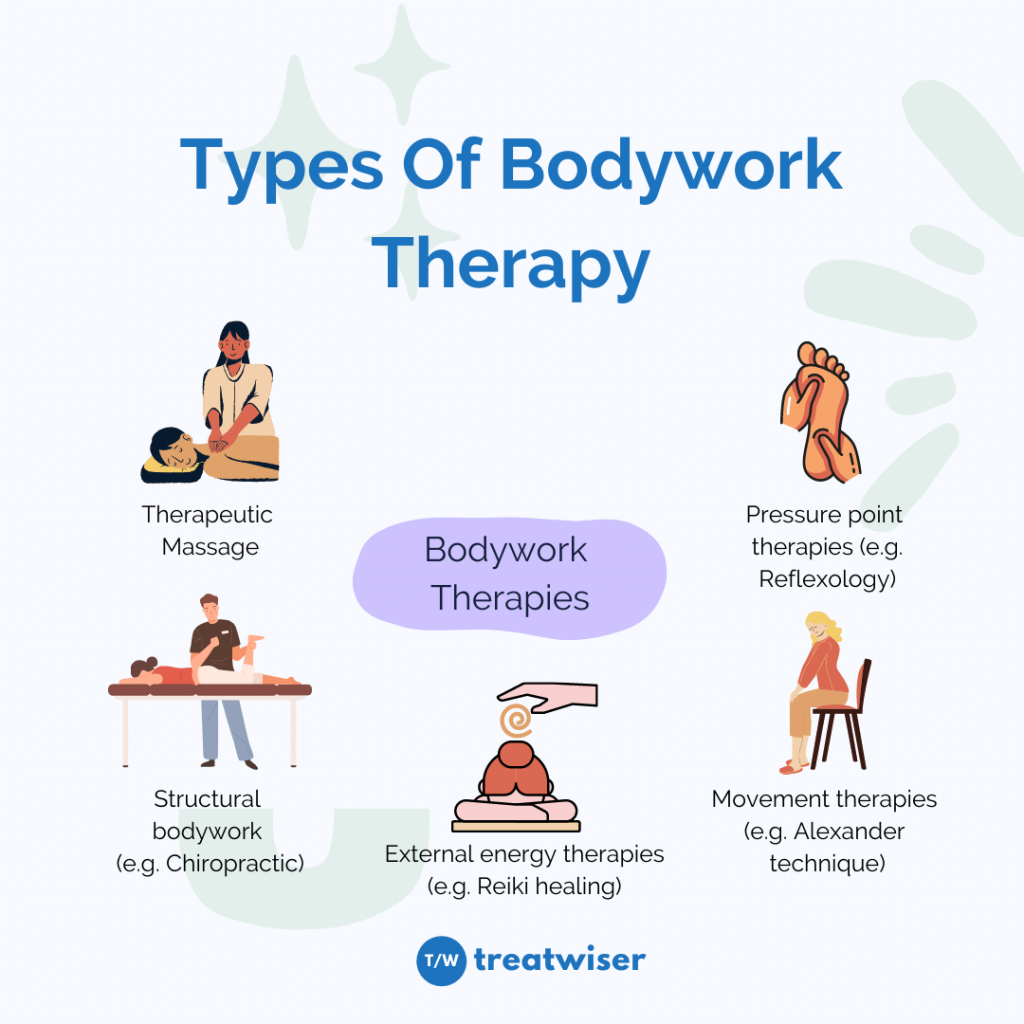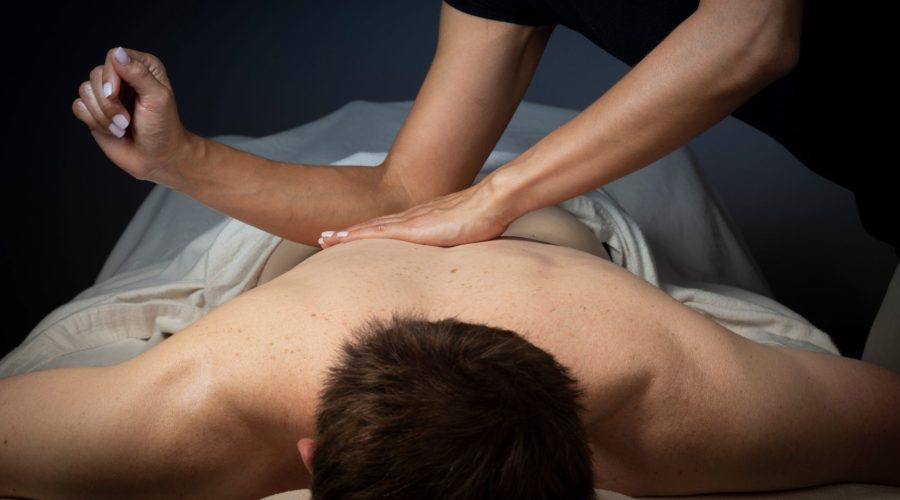Chronic back and neck pain, joint wear and tear, and ongoing stress are all part of being human. Luckily, regular bodywork therapy can give you more ease, flexibility, and comfort as you move through life!
Bodywork practitioners use hands-on techniques to shift tension, allowing healing to occur on a physical and emotional level.
In this article, we’ll explore the many variations of bodywork. You’ll also learn about the benefits of bodywork and what conditions it can help.
What is bodywork?
Bodywork therapy is an umbrella term for a group of complementary therapies that use manual and energetic techniques to soothe the nervous system, release muscle tension, relieve pain, and improve circulation.
Most people seek bodywork for stress relief, injury rehabilitation, pain, and mobility. It assesses and realigns the musculoskeletal system, increasing your form and function.
Bodywork therapies – like massage and myofascial release – also stimulate your vagus nerve, triggering your parasympathetic nervous system1. This moves you into a healing state so you can handle the pressures of life with more ease!
What are the benefits of bodywork therapy?
Chronic stress – physical, mental, or emotional – creates tension in your body and raises stress levels. If not addressed, patterns of stress and dysfunction get stuck in your body. This causes knock-on effects in the form of spasms, poor posture, chronic pain, frequent injuries, poor immunity, insomnia, digestive problems, and more.
Bodywork helps unravel tension by releasing the fascia — a network of membranes that cover your muscles, tendons, ligaments, and other musculoskeletal tissues. Physical touch is also known for reducing stress hormones and increasing “feel good” endorphins that kill pain and enhance feelings of well-being.2, 3
When your body returns to a state of balance, you can expect to see some of these benefits:
- Relaxation
- Pain relief
- Better sleep
- Reduced stress and anxiety
- Greater mobility and range of motion
- More energy
- Better posture
- Stronger immunity
- Fewer headaches
- Speeds up muscle and injury recovery
The beauty of bodywork is that it goes beyond the physical. It encourages healing on an emotional and mental level and improves the connection between your mind and body.
What are the different types of bodywork?
Bodywork therapy falls into a few categories:
Therapeutic massage: This includes Swedish massage, deep tissue massage, hot stone massage, Thai massage, and sports massage.
Biomechanical and structural bodywork: Osteopathy, chiropractic, Rolfing, myofascial release, Bowen therapy, trigger point therapy, craniosacral therapy, Kinesiology therapy, and dry needling use manual manipulation techniques to relieve musculoskeletal imbalances.
External energy therapies: These are based on the principle that all living bodies are surrounded by an invisible bioenergy field. This energy field helps promote the flow of vital energy throughout the body’s bioenergetic pathways. Examples include crystal healing and reiki healing.
Pressure point bodywork: Pressure point therapies originate primarily for East Asia. They attempt to apply pressure to specific points to improve flow of vital life energy throughout the body which is important for maintaining and restoring good health. Examples include: acupressure therapy, emotional freedom technique and reflexology.
Movement bodywork: Therapies like Alexander Technique and the Feldenkrais Method focus on movement re-education. Body awareness education helps correct your walking, standing, and sitting posture to relieve pain and chronic symptoms.

What’s the difference between bodywork and massage therapy?
Many people think body work only refers to therapeutic massage – but bodywork is a general term for different styles of touch therapy. It encompasses various techniques, such as soft tissue manipulation, musculoskeletal realignment, fascia release, breathing exercises, energy therapy, and posture education.
Massage therapy falls under the bodywork umbrella. It promotes relaxation and improves physical performance by relaxing sore muscles, eliminating tension, and improving flexibility. Massage therapy techniques are used during bodywork sessions.
How to get started with bodywork
The first step to starting bodywork is to find a modality that meets your needs by researching online and asking your friends and family for feedback on their bodywork experiences.
It’s essential to find a qualified, experienced therapist who is a match for you. You can search our Treatwiser Directory to find a qualified bodywork therapist in your area. We suggest emailing or phoning a few practitioners and asking about their qualifications, approach, area of speciality, and rates.
Final thoughts
Therapeutic bodywork therapy isn’t self-indulgent pampering – it’s a crucial part of preventive and holistic healthcare.
We believe bodywork should be a part of every self-care routine. It’s a great way to fill your cup!
Resources
- https://pubmed.ncbi.nlm.nih.gov/11872106/
- https://pubmed.ncbi.nlm.nih.gov/2526775/
- https://pubmed.ncbi.nlm.nih.gov/23251939/
DISCLAIMER: The Site cannot and does not contain medical / health advice. The medical / health information is provided for general informational and educational purposes only and is not a substitute for professional advice. Accordingly, before seeking any form of medical advice, diagnoses or treatment based upon such information, we encourage you to consult with your GP or other qualified health practitioner. You must never disregard professional medical advice or delay in seeking it because of something mentioned on this Site. The use or reliance of any information contained on the site is solely at your own risk.



